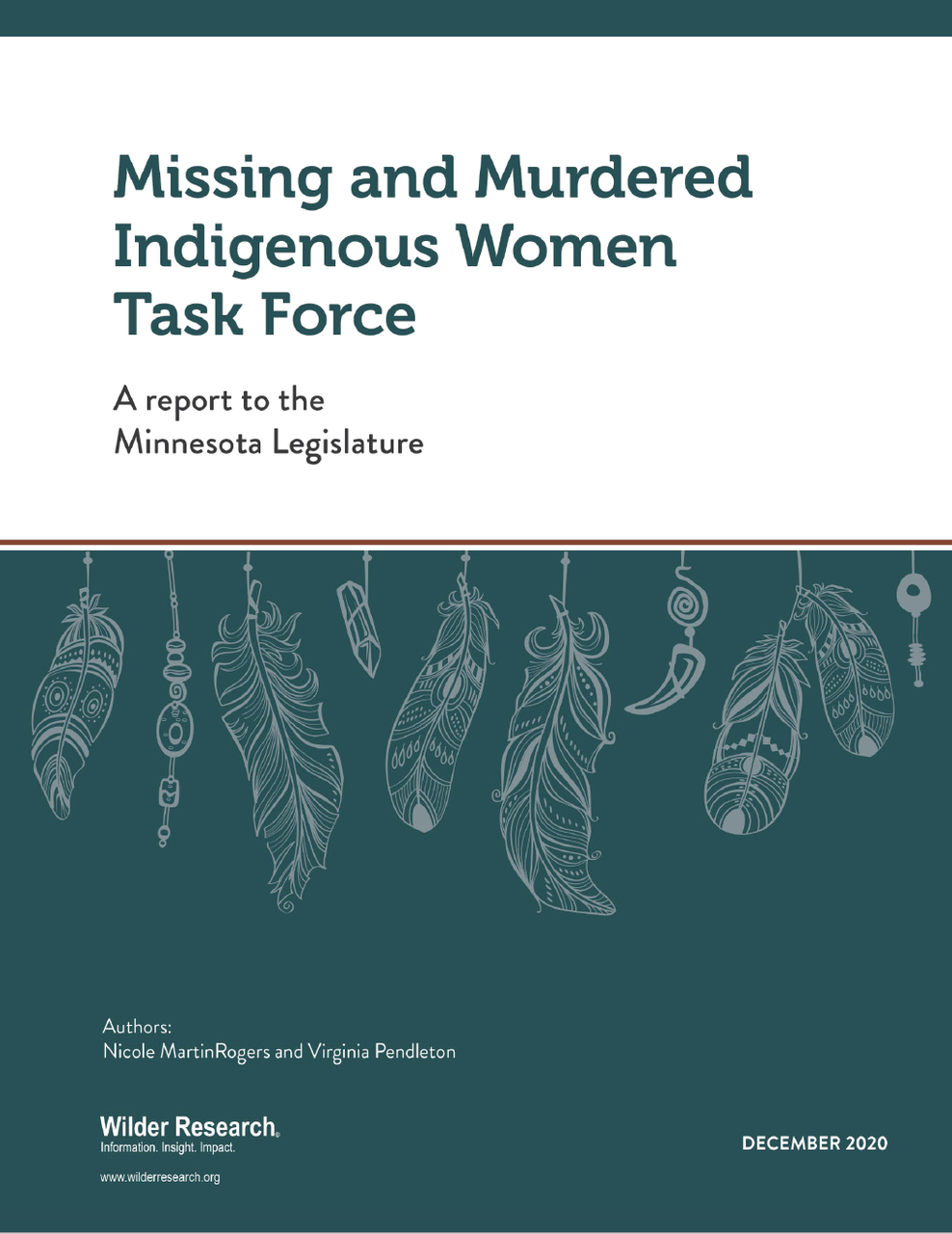Report
Missing and Murdered Indigenous Women Task Force - A report to the Minnesota Legislature

This report to the Minnesota Legislature includes mandates that aim to reduce and end violence against Indigenous women, girls, and two spirit people in Minnesota. It will serve as a road map for the Commissioner of Public Safety, other state agencies, and organizations that provide legal, social, and other community services throughout Minnesota. Information presented in this report reflects the truths of survivors of violence, family members, community members, government agencies, and experts. It was compiled over more than a year of public hearings, community conversations, interviews with experts, and evidence gathering. It delivers 20 mandates for systemic and community change directed at government, institutions, social service providers, industries, and all Minnesotans.
These proposed mandates recognize and consider the multigenerational and intergenerational trauma and marginalization of Indigenous communities in the form of poverty; insecure housing and homelessness; and barriers to education, employment, health care, and cultural support. This report addresses specific colonial and patriarchal policies that have displaced women from their traditional roles in Indigenous communities and governance and diminished their status in society, leaving them vulnerable to violence.
The Minnesota Missing and Murdered Indigenous Task Force Report proposes initial transformative actions in the areas of health, security, justice, and culture. We begin the path to reform with recognizing that the historic violence against Indigenous communities is more than a criminal justice/public safety issue. It reiterates the importance of tribal, state, and county relationships, and the necessity for data sharing in terms of accessibility, accountability, and uniformity. The report also addresses the need to provide more help and resources to the Indigenous women, girls, and two spirit people who are at most risk of being murdered or experiencing violence and exploitation; these individuals are often significantly involved with child welfare, criminal justice, and other systems that therefore have an opportunity to help.





